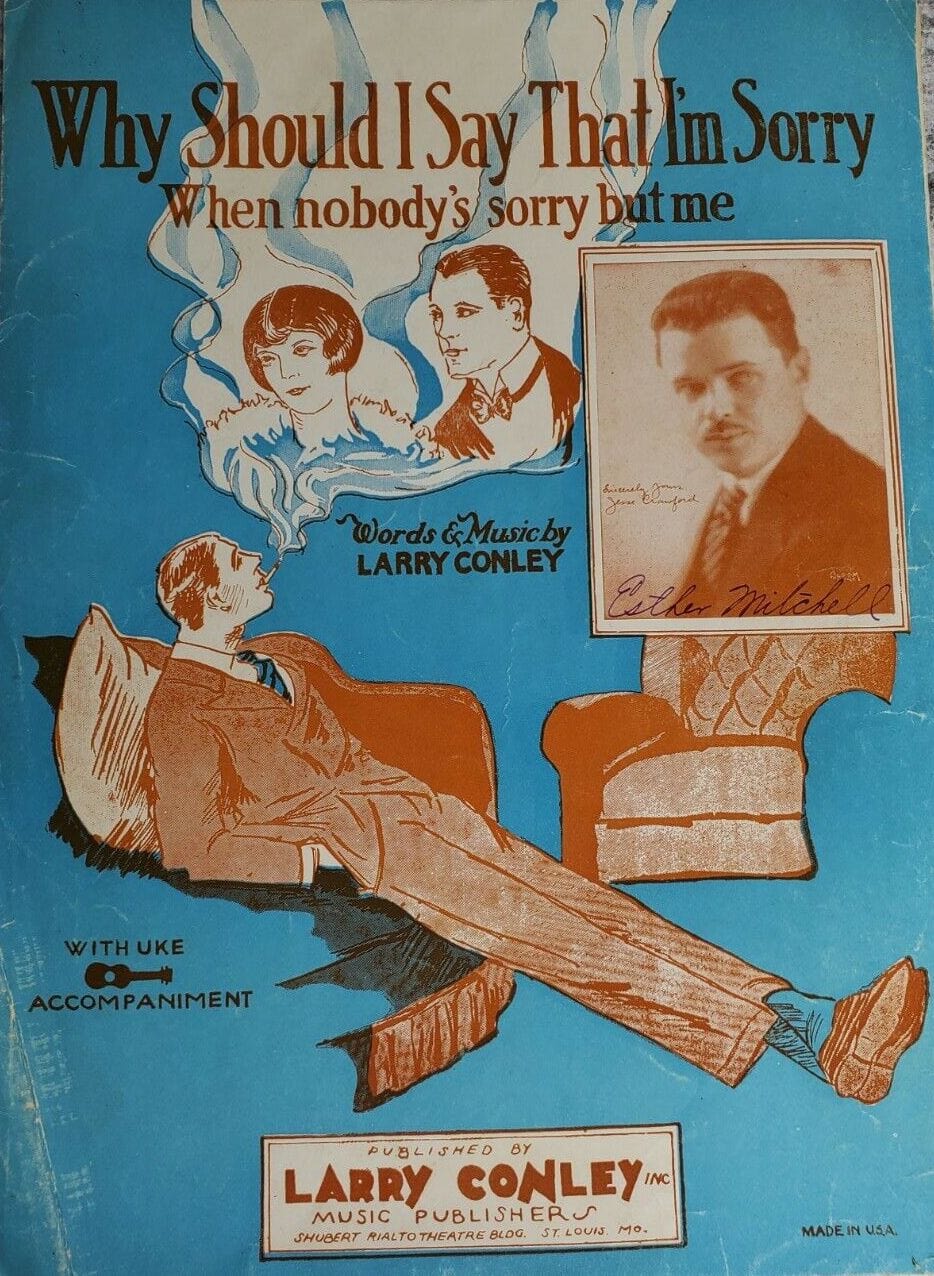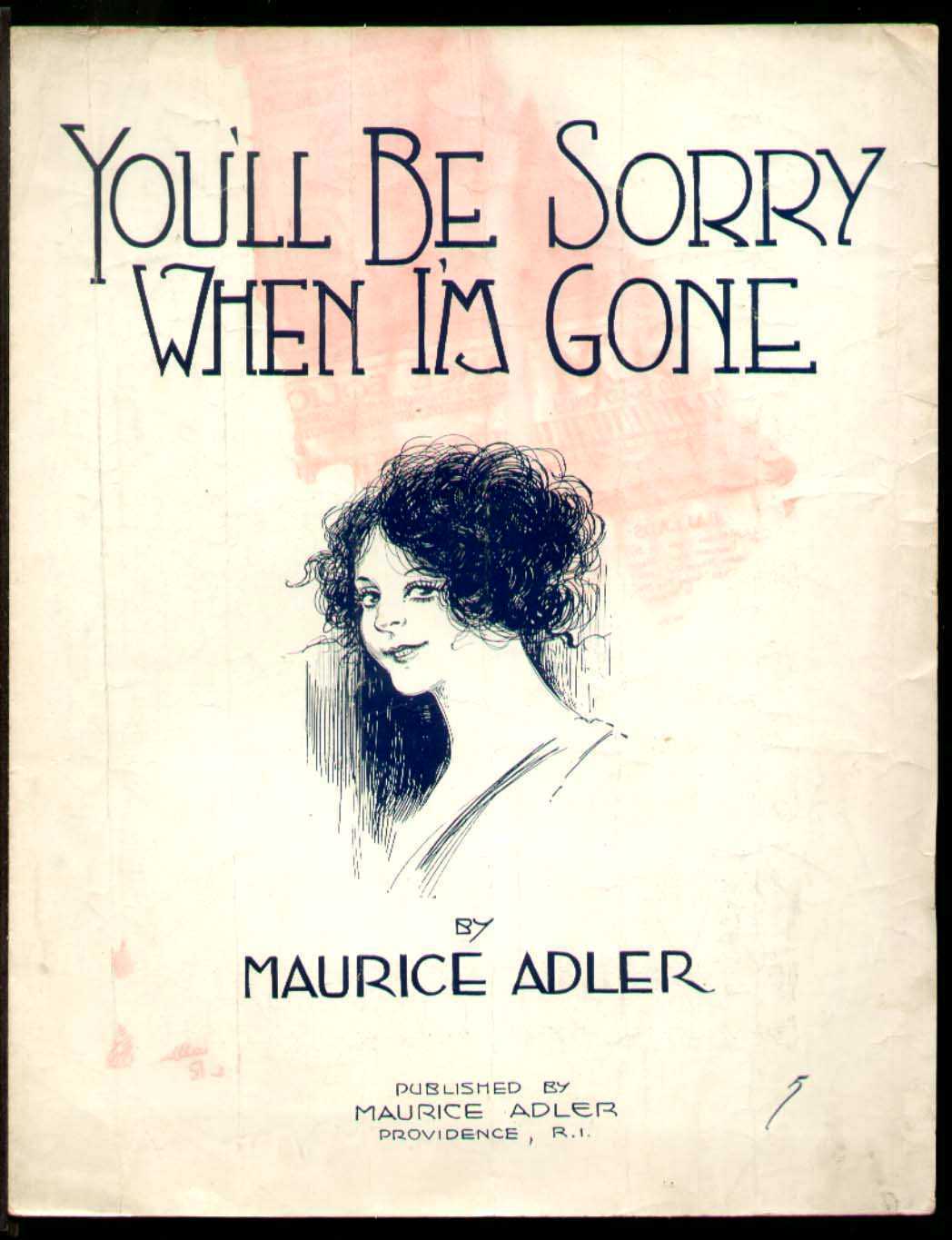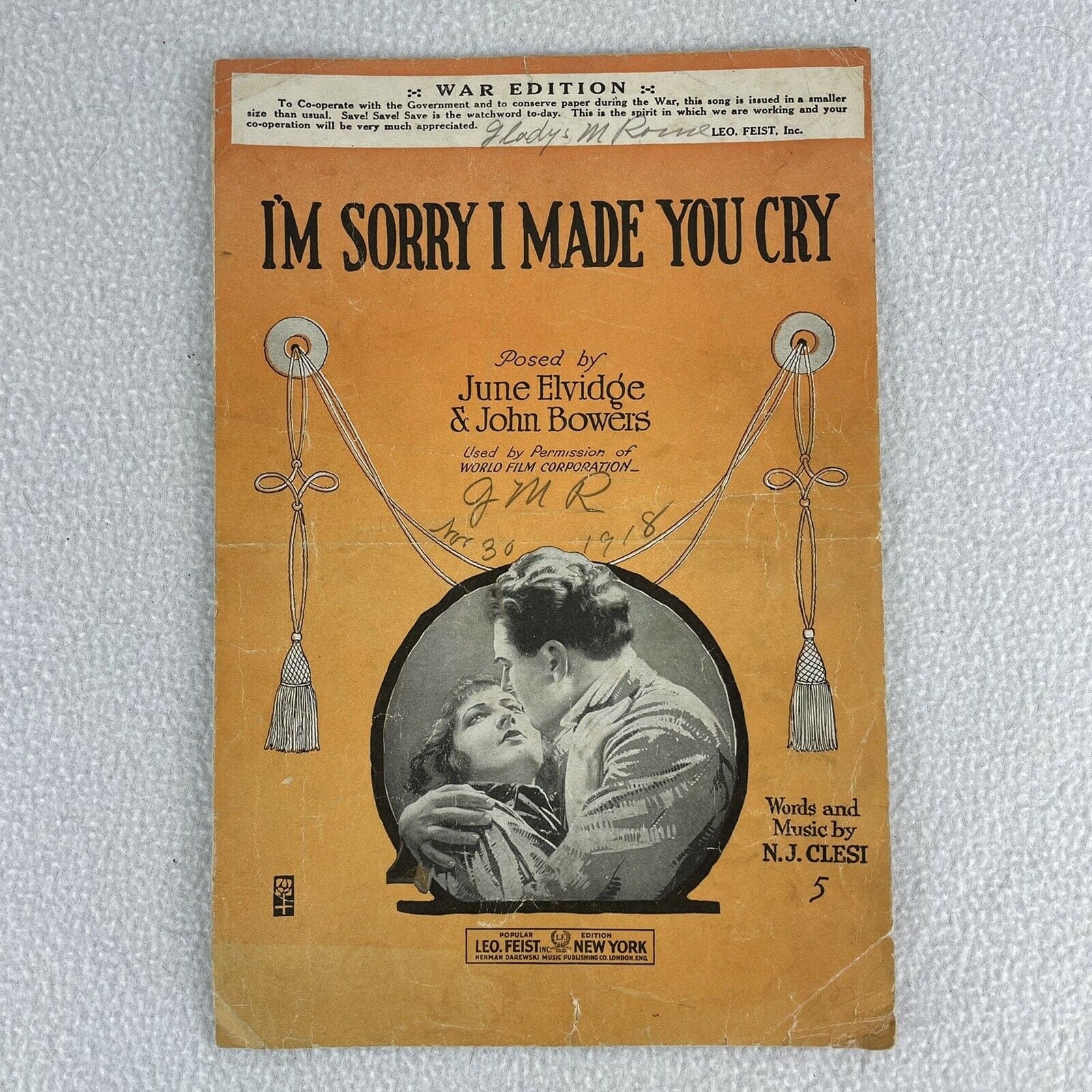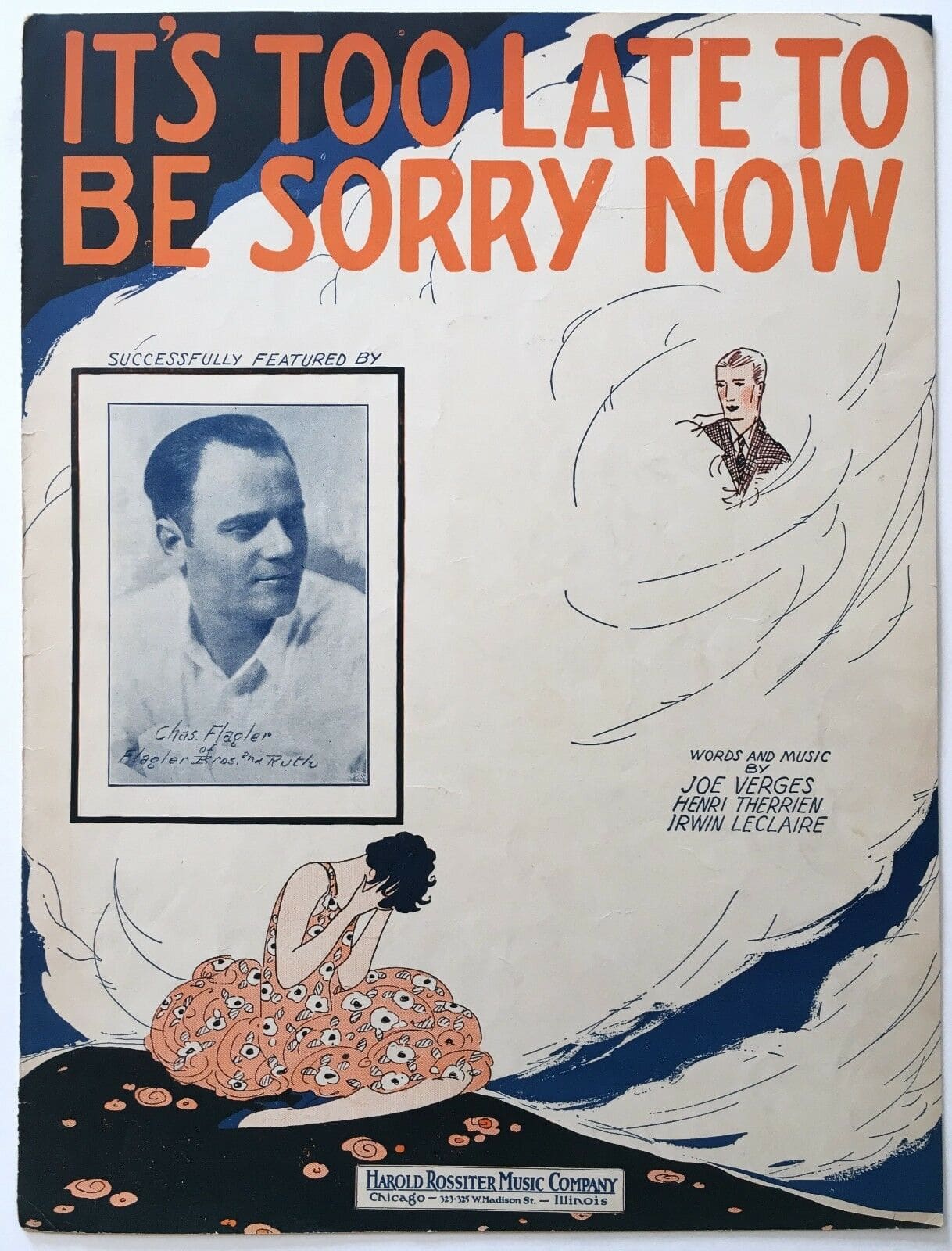Back in the day, there was a veritable universe of apology songs. Based on their sheet music, some of them were…unsettling. Here is a sampling, ranked from least to most unnerving.
Check out “Are You Sorry?” from 1925, below. The woman in the illustration definitely looks sorry. But what’s with the thunderous face of the woman in the photograph? All we can think is that the weeping illustrated woman cheated on the woman in the photograph and the woman in the photograph is still angry. Look at her expression. There is no ukulele arrangement that can fix this.
Next, let’s examine 1927’s “Why Should I Say That I’m Sorry When Nobody’s Sorry but Me.” A man lounges, smoking and sulking. Whose image is in the toxic cloud, we wonder? Is it him and his ex, or his ex with her new beau? Actually, who cares? The title of the song indicates that she is better off without him regardless. It’s obvious that he is a petulant loser, indolent and entitled. Who can blame her for rolling her eyes?
We are unsure of the role of the man in the illustration? But he looks shifty.
Also, again with the uke.
This woman in 1919’s “How Sorry You’ll Be (Wait’ll You See)” is clearly dreaming of revenge. She’s about to squeeze that butterfly in her well-manicured fist.
You can listen to the song here. It starts, “You’re going to leave me; you’re going away. I’ll bet you—well, I’ll bet you—that you’ll regret this day.” Yikes. It continues, “This isn’t the first time. You’ve done it before. Believe me, when you leave me you’re gone forever more.” Oh, yeah, he’s a dead man.
This woman from 1926’s “What Can I Say After I Say I’m Sorry?” seems less scary than her predecessor…on the surface. But look into her eyes. Those are the eyes of a bunny-boiler. She won’t be IGNORED, Dan!
This song actually became a jazz standard, recorded by Josephine Baker, Ella Fitzgerald, Nat King Cole, Benny Goodman, and Frank Sinatra. But honestly, if a red flag were a song, this would be that song. “I don’t know why I made you cry. I’m sorry, sweetheart, and yet…though you shouldn’t be lenient with me, I hope you’ll forgive and forget.” Regular readers know SorryWatch does not endorse asking for forgiveness. Forgiveness has to be earned; it’s a gift, and it is terribly rude to ask for a gift. And asking someone to forget as well as to forgive? Oh hell no. You don’t get to hold it over their head indefinitely when they screw up, but you also shouldn’t forget it ever happened, lest it happen again. As for “I didn’t mean to ever be mean to you; if I didn’t care I wouldn’t feel like I do”? RUN.
Also, ukelele.
The cover artist of 1919’s “Some Day You’ll Be Sorry That You’re Glad” has not only given this young woman murder eyes, he has managed to capture horror movie lighting.
The guy who dated the woman on the front of 1917’s “You’ll Be Sorry When I’m Gone” thought he was getting a Manic Pixie Dream Girl. He told his little friends in the Great War platoon, “Fellas, she’s wild! She doesn’t even marcel her hair or employ feather adornments!” Little did he know her hair was so big because it was full of secrets, and those secrets were all the bodies in the Providence River. Again, her eyes tell you everything. And that reddish splotch on the cover? I think you know what it is.
What a glorious font, though.
The body language on the cover of 1918’s “I’m Sorry I Made You Cry” makes us ask which of these people is going to kill the other first. “War Edition” indeed!
Bonus, the song itself is creepy as heck. The lyrics: “Dear little girl, have I made you sad? Your lips are trembling so. Those bitter tears will drive me mad. Jealous of me, I know! Do you believe there’s another girl? Do you believe me untrue? Thought I have wandered in life’s gay whirl, you called me back to you!” Sounds like gaslighting to us! The chorus goes, “One little word? One little smile? One little kiss, won’t you try? It breaks my heart to hear you sigh.” STOP PRESSURING HER!
An abridged, somewhat less cretinous version of the song was covered by Frank Sinatra in the 1940s and Connie Francis in the 1950s.
Perhaps 1921’s “You’ll Be Sorry That You Made Me Cry” is a response to 1918’s “I’m Sorry That I Made You Cry.”
In any case, we have no doubt that whoever wronged this woman was made to SUFFER. That lipstick says CORPSE AHOY.
It is 1926, and the lady on “It’s Too Late to be Sorry Now,” is gracefully curled up in her snazzy floral dress and adorable bobbed hair, having a brief cry over her ex in the cloud. Whom she has clearly dispatched. Our survey of sheet music concludes with an image that says POST-MURDER, as opposed to PLOTTING MURDER.
Don’t worry; she’s about to pick herself up and go out for more.
She’s got her dancing shoes on.
Image Credits: Uncredited eBay image










Did you notice that “You’ll Be Sorry When I’m Gone” was composed by Maurice Adler of PROVIDENCE? I think that positively providential that Providence is the hometown of one of the authors!
Mom, that’s why I made ze leetle Providence River joke!
Thank you for commenting! Love you! See you Friday night!
You are an absolute genius.